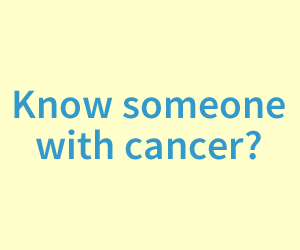Intravenous Vitamin C
Intravenous Ascorbic Acid (IVAA) is not the same as oral vitamin C. The key difference is with IVAA is direct injection into the blood stream results in plasma levels that cannot be achieved orally.
History
toc_collapse=0;Decades ago, Dr. Linus Pauling strongly believed that Vitamin C could and should be used to treat cancer. Because of his status, his views and research were very well publicized. Eventually, the Mayo Clinic ran a clinical trial to see if Vitamin C really did work. The trial, ran by Moertel, showed that 10g of AA (Ascorbic Acid) given to cancer patients who had recently undergone chemotherapy did nothing to improve their outcome. Pauling was angry and upset. He strongly believed the Mayo trial was flawed. One of his main objections was that the Mayo trial used oral vitamin C instead of the intravenous + oral treatment that Pauling and Ewan Cameron (his Scottish colleague) had been using. A second objection was that patients had already gone through chemotherapy and then were administered oral Vitamin C, after their immune systems had already been weakened. A public argument ensued, which gave a bad taste to the whole issue. As a resut, Vitamin C has been ignored by main stream medicine as a potential treatment for cancer.
Meanwhile, vitamin C has continued to be used by practitioners such as Robert Cathcart MD, Abram Hoffer (Dr. of psychiatry) and other practitioners who think out of the box and refuse to be constrained by conventional standards. These practitioners have gathered a fair amount of anecdotal evidence that vitamin C does a lot of good for cancer patients, possibly even "curing" them. However, without the support of main stream medicine, there has not been a way to prove its efficacy via tools such as a double blind randomized clinical trial.
Recent findings
Within the last few years, researchers at the NIH (Mark Levine et al) suddenly showed that many cancer lines are selectively killed in vitro - provided the concentration of serum Vitamin C is high enough. Secondly, they showed that normal cells were not destroyed by the Vitamin C. Thirdly, they showed that cytotoxic concentrations can only be reached if AA is given intravenously (not orally).
Their findings have stirred tremendous excitement. Could Linus Pauling have been right all along? Could it be that the Mayo trial was flawed because they didn't use intravenous vitamin C? Could it be that Pauling's results would have been even more successful if he had used higher concentrations of IVAA (he used 30 grams which is shown to be insufficient in maintaining high enough plasma levels)? The ramifications of these questions are tremendous.
There are now a handful of clinical trials using IVAA (Intravenous Ascorbic Acid) in conjunction with chemotherapy. The current president of ACAM, Dr. Jeanne Drisko, is running a phase II trial. You can read more about her at her Kansas University web page. Cancer Treatment Centers of America, is also running a phase I safety trial for solid tumors and IVAA. Therefore, it'll be a few years before we know whether IVAA works.
Key points
- Intravenous Vitamin Ascorbic Acid (IVAA) is not the same as oral. Believed to act as a pro-oxidant rather than anti-oxidant at high enough concentrations.
- Cancer cells uptake AA at much higher rates than normal cells, presumably because of molecular similarity to glucose.
- If concentration is high enough, AA is believed to interact with cellular Iron to form hydrogen peroxide, killing cancer cells from inside out.
- Normal cells are not harmed by very high concentrations of IVAA
- Immune system is not damaged, but rather strengthened by IVAA
- Linus Pauling was strong advocate decades ago (Pauling was a nobel prize winner, one of the top 10 scientists of all time, discoverer of numerous biology findings including demonstrating that sickle cell anemia occurs as a result of abnormality in haemoglobin molecule). Mayo Clinic trial discredited his findings. However, Mayo clinic only used oral vitamin C.Pauling was branded as a quack.
- Pauling typically used oral + 30 grams intravenous. Since then, doctors have been using up to 200 grams safely. Belief is that 30 grams is insufficient to elevate serum levels to tumor-toxic levels in many people.
- In 2006, NIH researchers have shown that AA kills many cancer lines in-vitro, while not harming normal cells. They've also found the required tumor-toxic concentration. (note: it's believed that tumors with low levels of catalase are more susceptible because catalase is needed to break down and prevent oxidative damage from H2O2).
- Clinical trials using IVAA have started. It takes time and there is very little money/support since Vitamin C cannot be patented.
- Patients can go for IVAA treatment TODAY. Alternative doctors have been using it for decades. Typically costs $100 per session. Multiple sessions are needed. You'll also need to pay for a couple of consultations with the doctor. If no IVAA doctor is available locally, you can have a remote doctor coordinate with a local registered nurse for administration.
Getting treatment
Treatment typically entails the following:
- Locating an IVAA practitioner who is up-to-date on the current research. Most such practitioners are usually not covered by insurance. You should have to pay for a handful of consultations with them. In between the consultations, the IV sessions should cost no more than $100-$200 per session. After all Vitamin C is really cheap and you're really paying for a seat in their drip clinic + the nurse labor (hooking you up and periodic monitoring).
- Get tested for suitability (G6PD, kidney function etc)
- Work with practitioner to find tumor-toxic doses. Read this book by Dr. Steve Hickey and Hilary Roberts. Discuss the possibility of adding Alpha-Lipoic Acid, Vitamin K or other synergistic compounds that can amplify tumor kill.
- Discuss complementary synergistic treatments. Make sure to view the video of the talk given by Dr. Contreras (see resources below). He uses pre-treatment of blood ozone treatment for 7 days and then does IVAA. Before each does of IVAA, he injects PERFTEC (artificial oxygen). The whole premise is increased oxygenation allows IVAA to reach deep into hypoxic tumors. Hypoxic tumors have little or no oxygen. No oxygen means IVAA will not generate H2O2.
- Work with practitioner to formulate game plan (protocol)
It's important to follow a protocol. If you have high tumor load, you must ramp up gradually to avoid sudden tumor lysis which can cause death). In the beginning you may get 2-5 treatments a week. Gradually this will taper down to maintenance doses (like once every 2 weeks or once a month). Follow a protocol. Do not start/stop suddenly. Like any chemo, there is always the possibility of your cancer developing resistance. Jeanne Drisko gives her protocol freely to doctors upon request.
For San Francisco Bay Area patients
I personally tried arranging for a phone consult with Dr. Jeanne Drisko. At that time, the waiting time was around 3 months. However, administering intravenous vitamin C is technical very simple to perform. If you want to give it a shot, you'll need to find a local practitioner who believes in it and is willing to treat you. If you live in the San Francisco Bay are, you can check out this list of doctors. Note that the list is not totally up to date. For example, Dr. Cathcart recently passed away and Dr. Guilford does not seem to be currently taking patients.
Resources
Papers
|
Interesting reads
|
Videos
|
Other links
|



